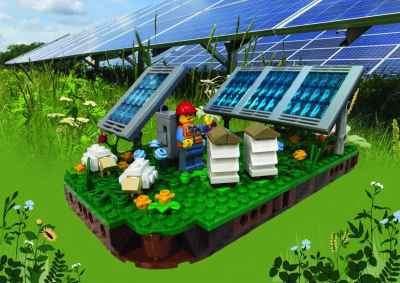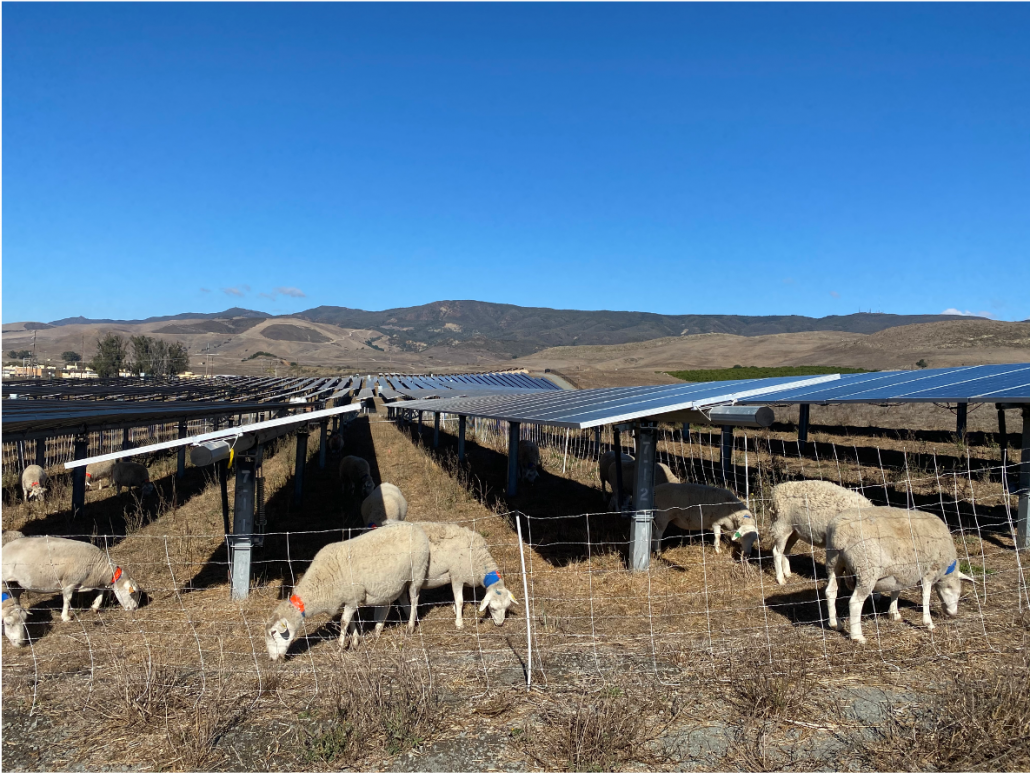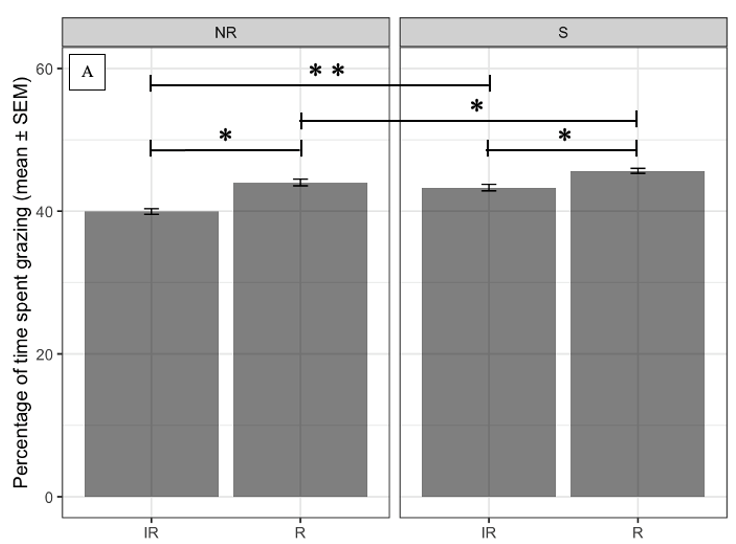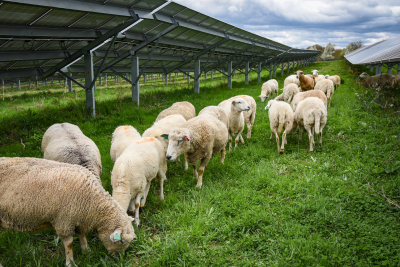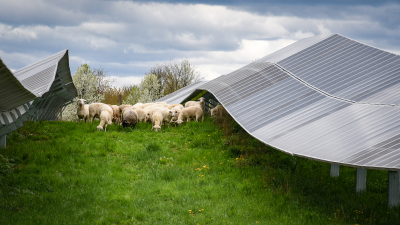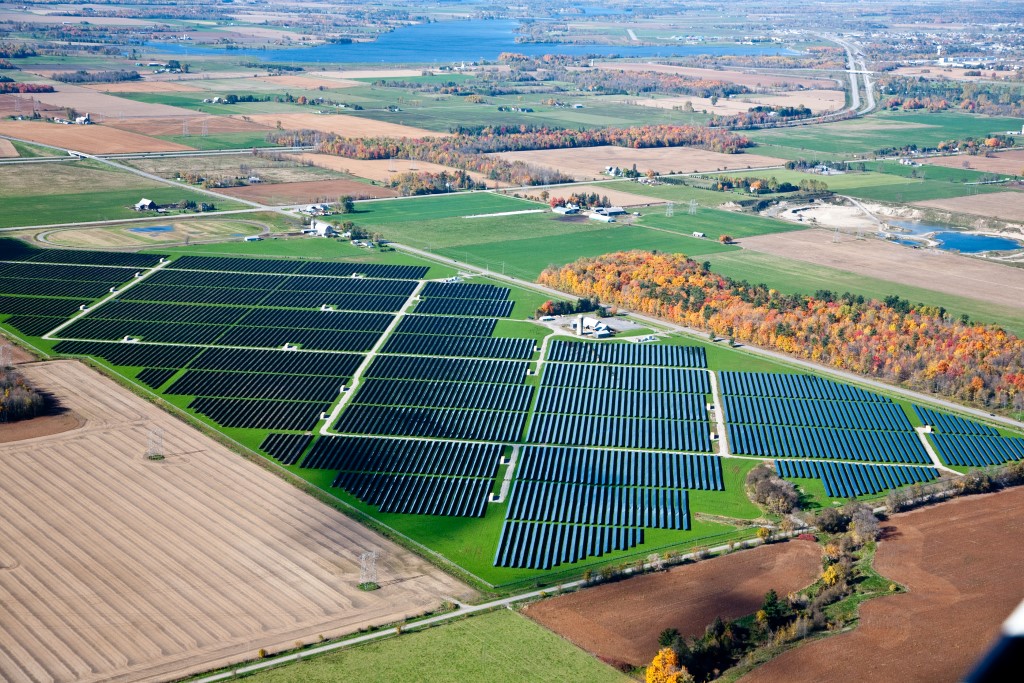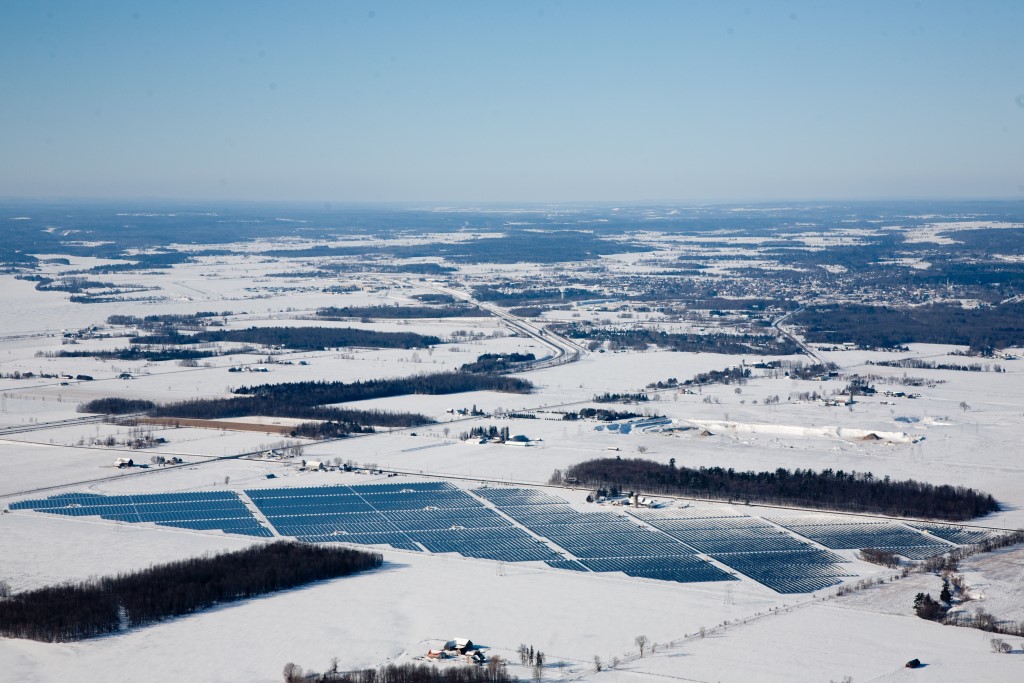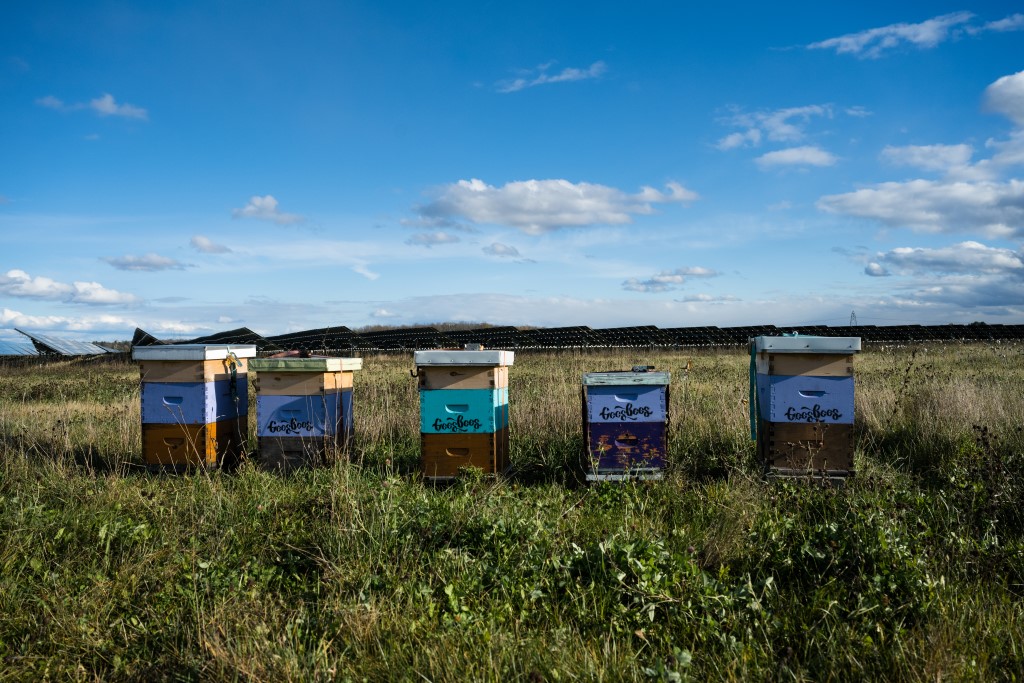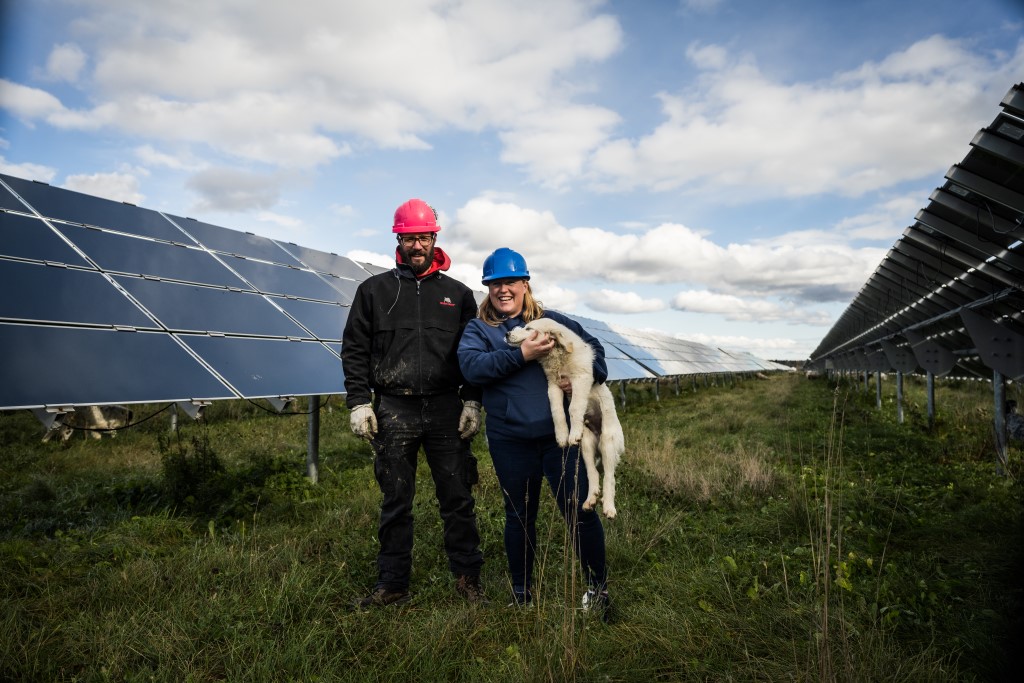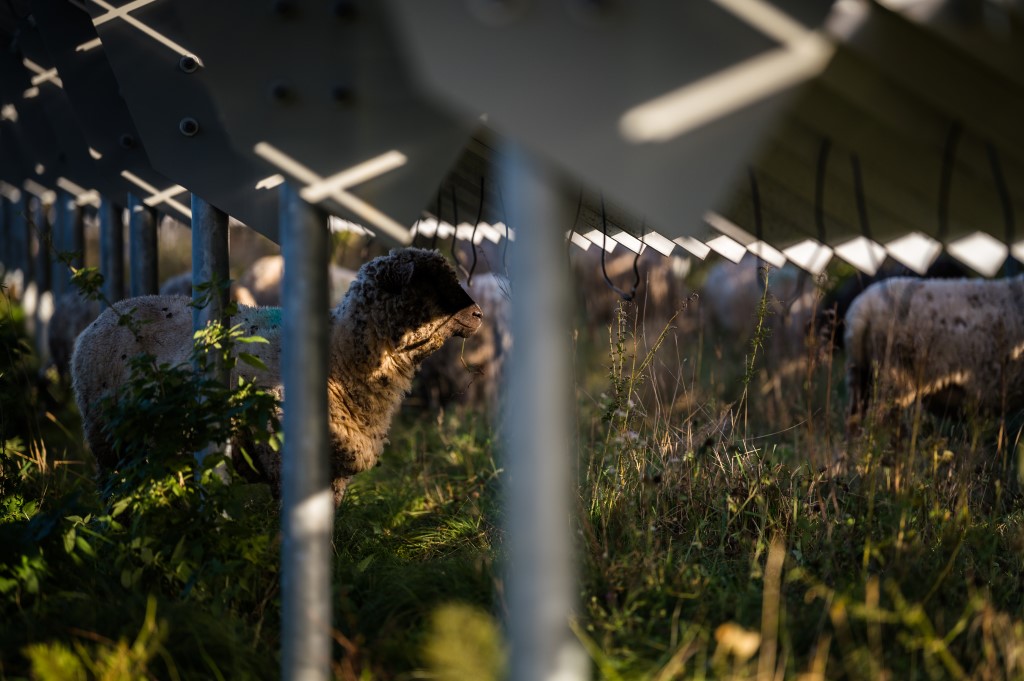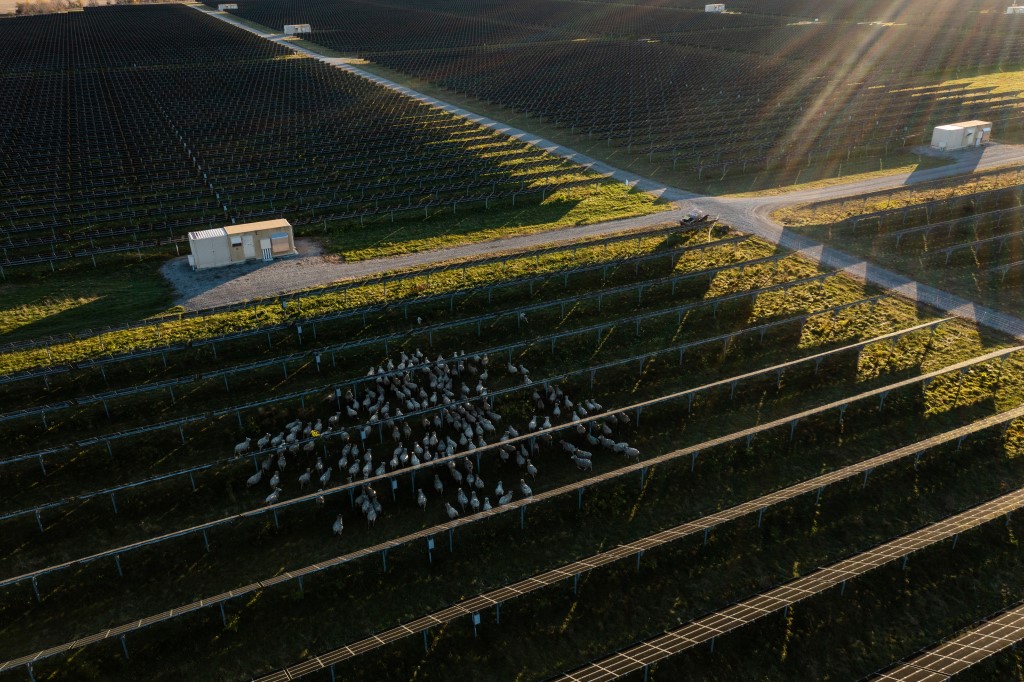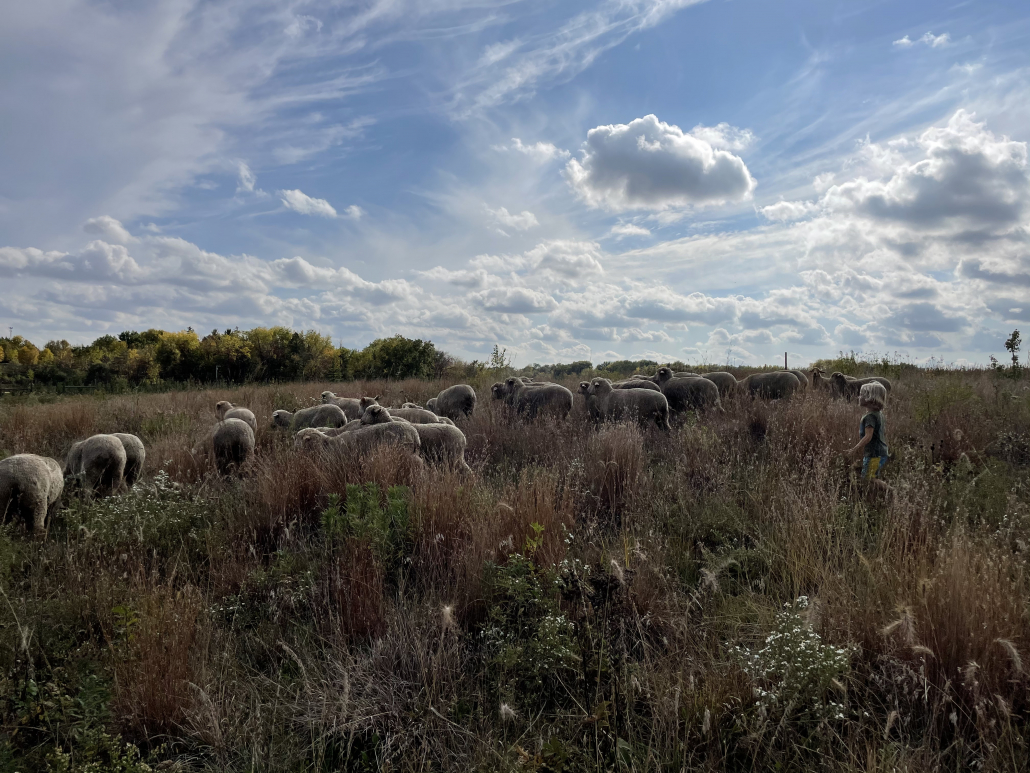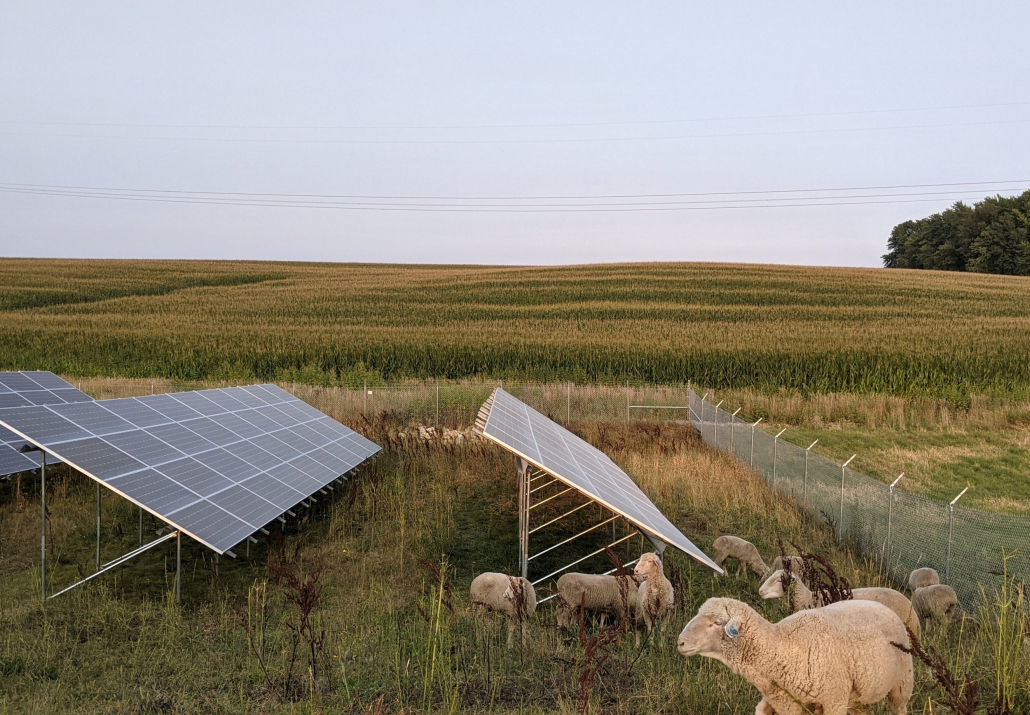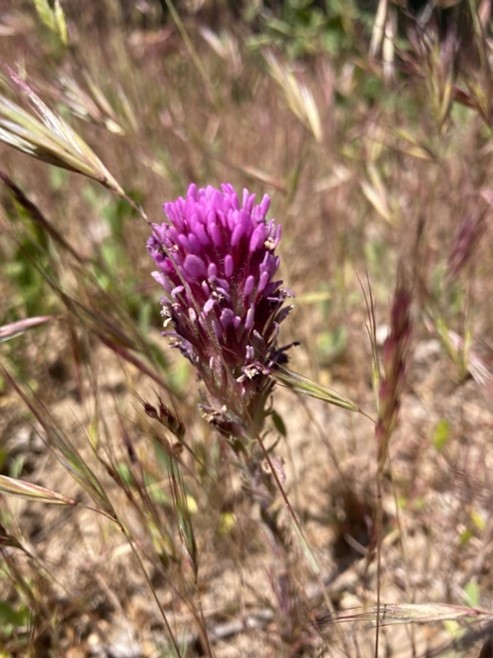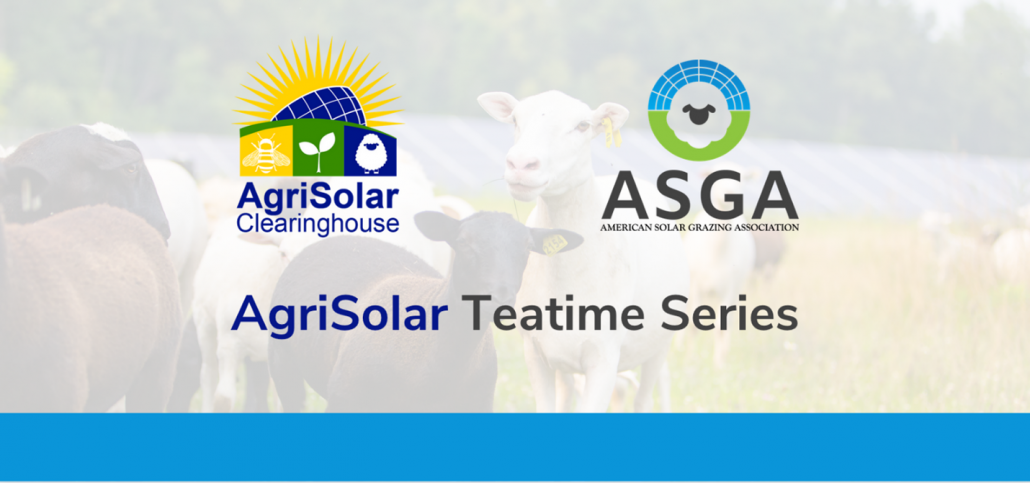Michigan Agrisolar Farm Includes Cattle
“Since farms use a significant amount of energy, generating electricity directly on the farm is appealing for those seeking to reduce expenses. Also, farming-friendly solar is possible where several farms have married on-farm solar with rotational grazing of livestock. While sheep have been the predominant livestock used in solar pastures, new approaches show the possibility of harvesting the sun and providing pasture for grass-fed cattle on the same site.
Farming-friendly solar is made possible by engineering a system where the panels are raised upwards of eight feet off the ground, allowing cattle to move beneath. On hot summer days the cattle seek relief from the sun in the shade from the panels. Similarly structured to a carport, the elevated solar structure is designed to withstand rugged outdoor applications with a properly supported foundation to manage the higher wind pressure.” – Michigan Farm News
Nebraska Pork Producers Benefit from Agrisolar
“A Northeast Nebraska pork producer is using renewable energy to promote sustainable agriculture and offset energy consumption on his farm.
Jason Kvols tells Brownfield he installed 300 solar panels on the top of his hog barns two years ago and an app tracks the impact on the environment. ‘It coverts it to pounds of carbon dioxide saved through this solar system. Over the two years, it’s up to 432,000 pounds of CO2 that my system has saved in production from two years.’
He says he received a 26-percent tax credit on the project, and it has a 7- to-8-year payoff period.” – Brownfield
Kunekune Pigs Found to be Ideal for Small Farms
“Kunekune (pronounced “cooney cooney”) pigs are a good option for small farms and homesteads. The animals’ gentle nature, manageable size, and low input requirements beyond minimal rations and standard veterinary care like vaccinations and de-worming, make them a smart pick for those looking for an entry point into livestock production.” – Eco Farming Daily
You can find a free Kunekune Pig Guide here, provided by Eco Farming Daily.

